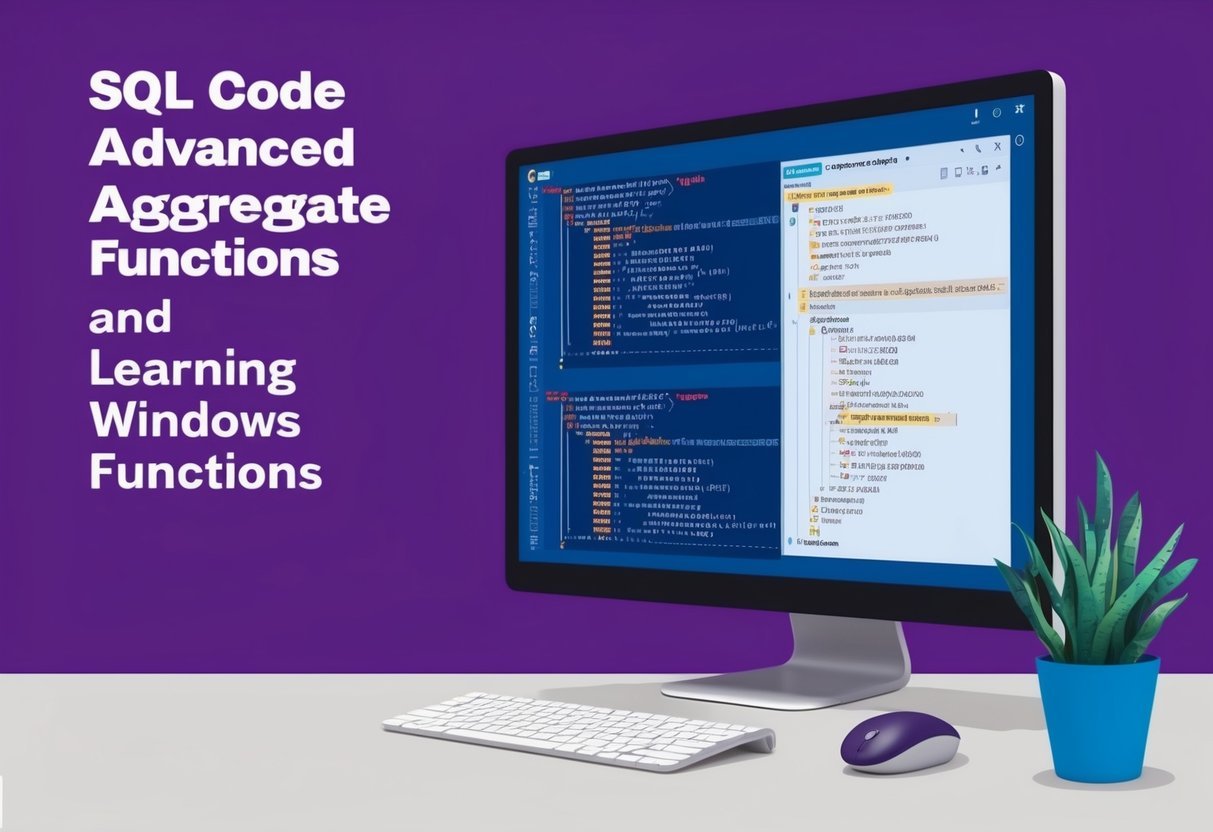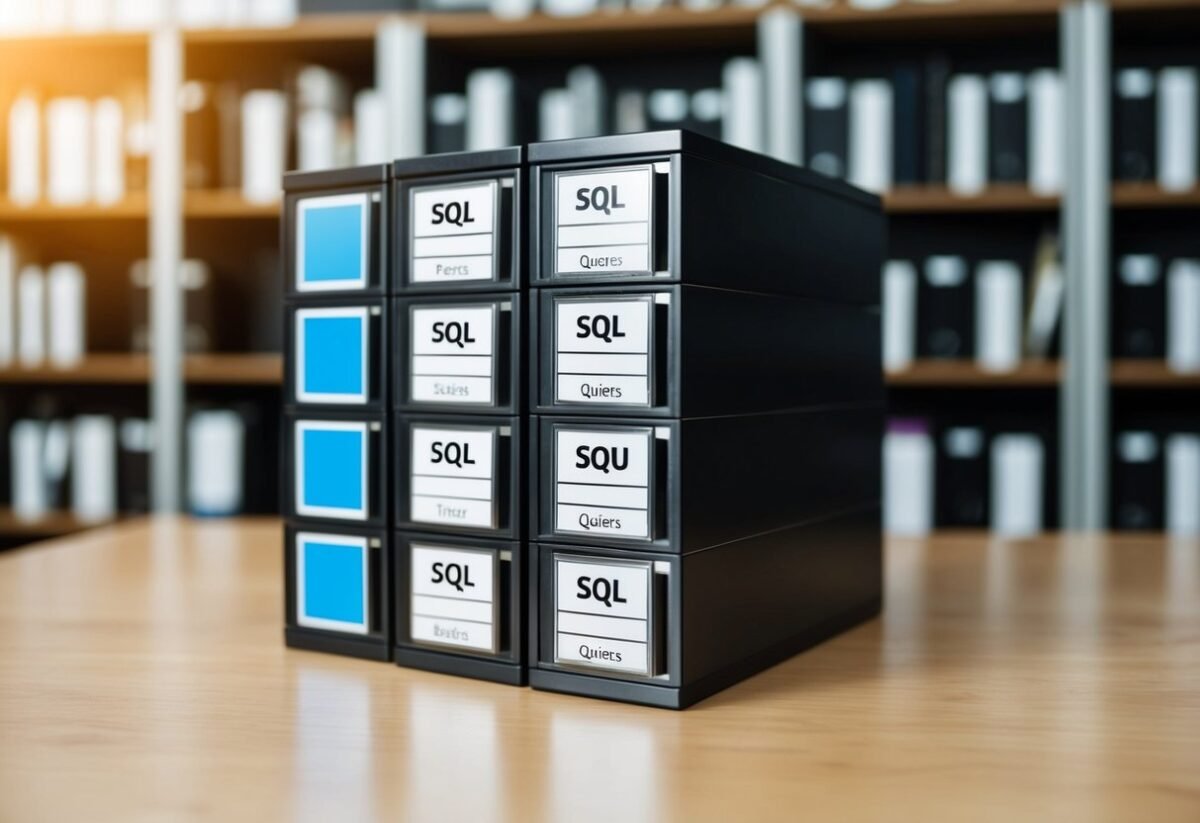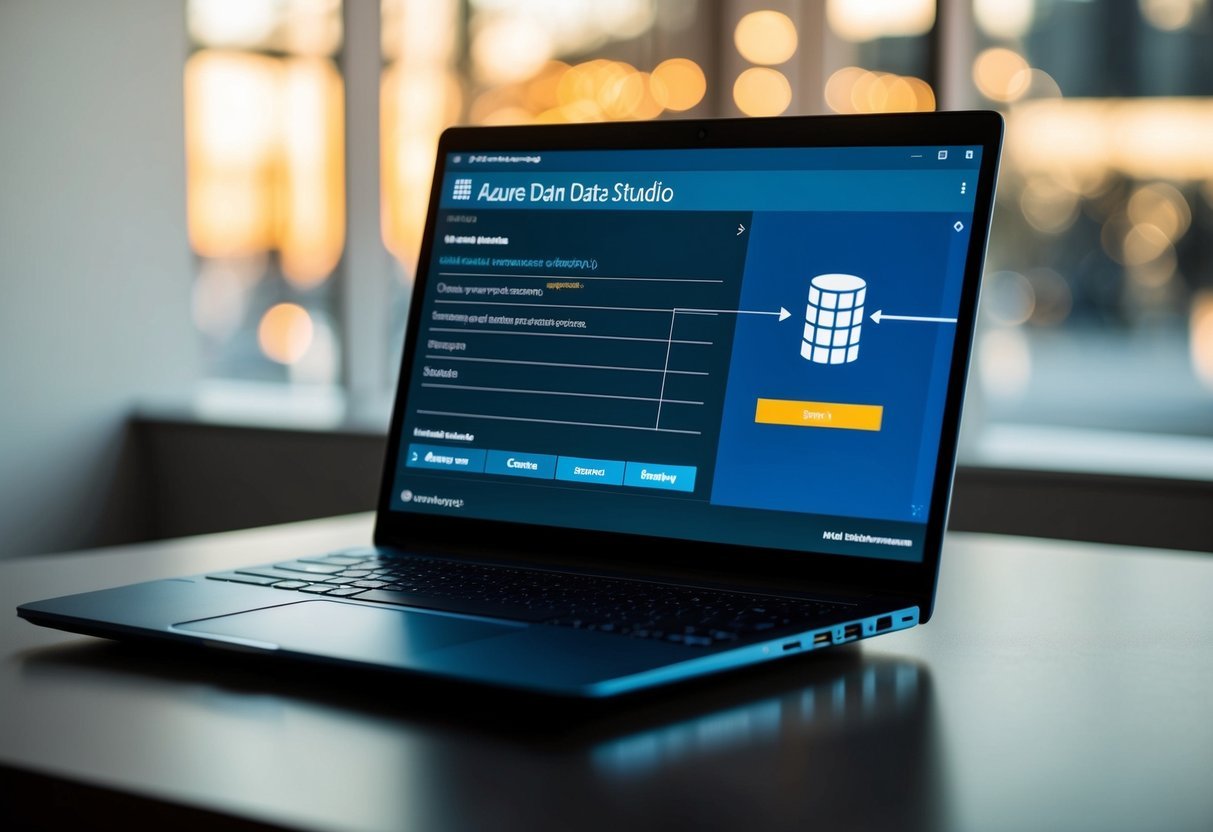Fundamentals of Ordinary Least Squares (OLS)
Ordinary Least Squares (OLS) is a key technique in linear regression that helps estimate the linear relationship between variables.
Its primary goal is minimizing the differences between observed and predicted values, ensuring the best fit line for data.
Understanding the OLS Method
Ordinary Least Squares is a statistical method used to estimate the coefficients in a linear regression model.
It works by minimizing the sum of the squared residuals, which are the differences between observed values and the values predicted by the model. This process results in a line that best fits the available data.
OLS assumes linearity, meaning the relationship between the dependent variable and each independent variable is linear.
Additionally, it requires that errors, or residuals, are normally distributed and have constant variance. These assumptions are crucial for ensuring accurate and reliable results.
If these conditions are met, OLS provides unbiased and efficient estimates of the coefficients, allowing for meaningful interpretation and predictions.
The Heart of Linear Regression
At the core of linear regression, OLS determines how changes in independent variables affect the dependent variable.
By calculating the equation of a straight line, OLS finds the optimal fit by adjusting the coefficients. These coefficients quantify the effect each independent variable has on the dependent variable, helping to understand how different factors contribute to variations in the outcome.
The resulting regression line reveals patterns and trends within data while highlighting the strength of the relationship between variables.
Practically, this means making accurate forecasts and data-driven decisions becomes possible across various domains, from economics to biology.
The effectiveness of OLS hinges on proper application and adherence to its assumptions, ensuring robust and applicable findings in real-world scenarios.
Key Concepts and Terminology
Understanding linear regression involves grasping a few essential concepts. These include the roles of dependent and independent variables, as well as the function of coefficients and intercept in predicting outcomes.
Defining Dependent and Independent Variables
In a linear regression model, the dependent variable represents the outcome or the variable we aim to predict. It is typically denoted as ( y ).
The independent variables, on the other hand, are the predictors or inputs. They are often represented as ( x_1, x_2, ldots, x_n ), and affect the dependent variable. These variables can be manipulated to see how changes impact the dependent variable, making them crucial for model accuracy.
In practical terms, if one wanted to predict house prices (dependent variable), features such as location, size, and number of rooms are independent variables. By analyzing how these inputs affect price, more accurate predictions can be made.
Exploring Coefficients and Intercept
Coefficients in a linear regression model measure the relationship between each independent variable and the dependent variable.
These values tell us how much the dependent variable is expected to change when the independent variable changes by one unit.
The intercept represents the constant term in the equation. It indicates the expected value of the dependent variable when all independent variables are zero.
In the equation ( y = b_0 + b_1x_1 + b_2x_2 + ldots + b_nx_n ), ( b_0 ) is the intercept, and ( b_1, b_2, ldots, b_n ) are the coefficients.
These elements form the crux of the regression equation, revealing insights about data relationships. Proper estimation and interpretation are key to model success, impacting the predictions generated by the regression analysis.
Assumptions Behind OLS
Ordinary Least Squares (OLS) regression relies on several key assumptions to produce reliable estimates. Key assumptions include linearity, independence, homoscedasticity, and normality. Violating these assumptions can lead to biased results or inefficient estimates.
Linearity and Independence
The assumption of linearity means that the relationship between the independent variables and the dependent variable should be linear. This implies that changes in the independent variable are associated with proportional changes in the dependent variable.
It’s essential to check for linearity since non-linear relationships can lead to incorrect model predictions.
Independence is another critical assumption. Observations should be independent of each other—meaning that the outcome of one observation does not affect another.
Independence helps ensure that the sample provides a true picture of the population. Dependence between observations can result in unreliable estimates and increase the chance of Type I or Type II errors.
Homoscedasticity and Normality
Homoscedasticity refers to the constant variance of residuals, or errors, across all levels of the independent variable.
In OLS, it’s crucial that the spread of these errors remains consistent as different independent variable values are encountered. If the model shows signs of heteroscedasticity, or non-constant variance, it may affect the accuracy of coefficient estimates and predictions.
Normality assumes that the residuals of the model are normally distributed. This condition is important for hypothesis testing and estimating confidence intervals.
If residuals do not follow a normal distribution, it might suggest the need for data transformation or the use of alternative estimation methods. This assumption is particularly vital when conducting t-tests or deriving statistical inference from the model.
Building the Regression Model
Creating a regression model involves specifying the model and determining the best-fit line that suits the data. The process includes choosing the right variables and methods to find the best parameters that satisfy the linearity assumption.
Model Specification and Selection
Selecting the right model is crucial in building a regression model. This step involves deciding which variables to include as predictors and ensuring that they effectively capture the relationship with the dependent variable.
It’s essential to check the linearity assumption to ensure that a straight line can approximate the data accurately. Researchers often assess various models, comparing them using criteria like R-squared, AIC, and BIC to determine the best fit.
The chosen model should minimize the error between observed and predicted values. This trade-off between simplicity and accuracy is key to model selection.
Calculating the Best-Fit Line
Once the model specification is complete, the next step is calculating the best-fit line.
This involves using techniques like Ordinary Least Squares (OLS) regression to estimate the model parameters.
OLS minimizes the sum of squared differences between observed and predicted values, ensuring the line is as close as possible to the data points.
By finding the optimal slope and intercept, the regression model aligns well with the data trends. Calculating these parameters accurately is important, as they indicate the strength and direction of the relationship. A precise best-fitting line helps make reliable predictions and draw meaningful insights from the data.
Regression Analysis and Interpretation
Regression analysis is a powerful tool in statistics, used to understand the relationship between variables. Key components include the sum of squared residuals and R-squared values, which help in interpreting how well a model fits the data.
Investigating the Sum of Squared Residuals
The sum of squared residuals (SSR) is a measure of how well a regression line fits a set of data points. It calculates the total squared differences between the observed values and the values predicted by the model.
A lower SSR indicates a better fit, as it suggests that the data points are closer to the regression line.
In regression analysis, minimizing the SSR is crucial because it helps find the best-fitting line through the data. The Ordinary Least Squares (OLS) method specifically focuses on this by aiming to make the SSR as low as possible.
Analysts can assess model accuracy by examining the SSR, with lower values indicating more reliable predictions.
Residuals are vital in checking if assumptions of linear regression are met. If they show non-random patterns, it may indicate issues such as non-linearity or heteroscedasticity.
Understanding R-Squared and Adjusted R-Squared
R-squared is a statistical measure that indicates how much of the variance in the dependent variable can be explained by the independent variables in the model.
It ranges from 0 to 1, where a higher value signifies a better fit of the model to the data.
While R-squared gives an idea of fit, it may be misleading when adding more variables to the model. This is where adjusted R-squared becomes useful.
It adjusts the R-squared value for the number of predictors, providing a more accurate measure when multiple independent variables are involved.
Adjusted R-squared is essential when comparing models with different numbers of predictors. It can help prevent overfitting by showing whether additional variables improve the model’s performance significantly or not.
OLS Estimation Techniques
Ordinary Least Squares (OLS) estimation is a method used to find the best-fitting line in linear regression analysis. The aim is to minimize the differences between observed values and estimated values. Two primary techniques for implementing OLS include using the Statsmodels library in Python and understanding the role of gradient descent.
Utilizing Statsmodels and Python
Statsmodels is a powerful Python library that simplifies statistical modeling.
It offers a user-friendly interface for conducting OLS estimations. By incorporating Statsmodels, users can easily estimate OLS coefficients with functions like OLS() and fit().
Statsmodels also provides summary tables that display these estimators and additional statistics. These tables include R-squared values, coefficients, and standard errors, making them an essential tool for analysts.
Here’s a brief example of how OLS estimation works in Statsmodels:
import statsmodels.api as sm
X = sm.add_constant(X) # Adds a constant term to the predictors
model = sm.OLS(y, X).fit()
print(model.summary())
In this way, Statsmodels streamlines the process of performing OLS regression, enhancing clarity and accuracy. Python as a programming language supports versatile analytical processes, making it crucial for data scientists and statisticians.
The Role of Gradient Descent
Gradient descent is an optimization algorithm that iteratively adjusts model parameters to find the minimum value of a cost function.
In the context of OLS, this method can help refine model estimators when datasets are large or complex.
While traditional OLS directly calculates coefficients, gradient descent offers an alternative approach useful for machine learning models. It updates coefficients by taking small steps proportional to the gradient of the cost function.
Here is how the gradient descent algorithm typically functions:
- Initialize coefficients randomly.
- Compute the gradient of the cost function.
- Adjust the coefficients in the opposite direction of the gradient.
- Iteratively repeat until convergence.
This approach is especially valuable when dealing with large datasets or when computational efficiency is a priority. Gradient descent ensures precision and scalability while complementing the robust framework of linear regression analysis.
Challenges in OLS
Ordinary Least Squares (OLS) is a common method for estimating linear relationships. Challenges such as multicollinearity and outliers can impact model accuracy. These challenges require careful identification and handling to ensure reliable results.
Detecting Multicollinearity
Multicollinearity occurs when independent variables in a regression model are highly correlated. This can lead to unreliable coefficient estimates and inflate the variance.
One common way to detect multicollinearity is by calculating the Variance Inflation Factor (VIF). If the VIF value exceeds 10, it typically indicates a problem with multicollinearity.
Another method is examining the correlation matrix of the predictors. High correlation between two variables can hint at multicollinearity.
When multicollinearity is present, it becomes hard to determine the effect of each predictor on the dependent variable. One solution is to remove or combine correlated variables to improve model stability.
Addressing Outliers and Leverage Points
Outliers are data points that do not fit the trend observed in the rest of the data. Leverage points have an extreme value in an independent variable that can unduly influence the model’s estimates. Identifying influential points is crucial as they can distort the regression results.
One method to address outliers is to use graphical tools such as scatter plots to visualize data patterns.
Additionally, statistical tests can confirm the presence of outliers.
Robust regression techniques like L1 regression can help minimize the impact of outliers.
For leverage points, examining diagnostic plots such as Cook’s distance can be effective.
Removing or adjusting these points ensures more accurate and reliable regression results.
Properly managing outliers and leverage points helps maintain the integrity of OLS-based models.
Advanced OLS Concepts
Ordinary Least Squares (OLS) can be expanded into more advanced techniques. These include using weighted least squares to handle heteroscedasticity and employing regularization methods like lasso regression to improve model performance and interpretability.
Exploring Weighted Least Squares
Weighted Least Squares (WLS) is useful when the assumption of constant variance in errors, known as homoscedasticity, is violated. In such cases, variance in the data increases with some predictors.
WLS assigns different weights to data points during regression, accounting for varying reliability. This technique adjusts the loss function to minimize the mean squared error of the weighted errors.
By doing so, WLS can provide more efficient and unbiased estimates compared to traditional OLS.
Implementing WLS involves selecting appropriate weights for each data point, often inversely related to the variance of each observation.
This method ensures that OLS gives more emphasis to points with lower variance, thus stabilizing the variance and improving model accuracy.
Therefore, WLS is especially beneficial for data exhibiting heteroscedasticity.
Regularization with Lasso Regression
Lasso Regression introduces a penalty to the OLS model to prevent overfitting and enhance interpretability. The technique adds a regularization term to the loss function, encouraging the model to reduce complexity by driving some coefficients to zero. This exclusion of less important features simplifies the model while maintaining prediction accuracy.
Lasso modifies the traditional mean squared error criterion by including an absolute value penalty of the coefficients.
Mathematically, the objective is to minimize this penalized loss function, allowing the model to handle multicollinearity.
While similar to other regularization methods, lasso excels in situations where many predictor variables hardly contribute to the desired outcome.
Selecting important features becomes straightforward, making models easier to interpret and improving generalization to new data.
Practical Applications of OLS
Ordinary Least Squares (OLS) is widely used in several fields to analyze relationships between variables. It helps in understanding complex data patterns and predicting future trends, which is crucial in both finance and public services like healthcare and education.
In Finance and Econometrics
In the world of finance, OLS is an essential tool for evaluating asset pricing models and understanding market behavior. Analysts use OLS to estimate the returns and risks of various financial assets. Using historical data, it enables predicting stock prices, bond yields, and foreign exchange rates.
In econometrics, OLS is used to study economic relationships and forecast economic variables. It helps in determining the impact of factors like interest rates and inflation on economic growth.
Economists rely on OLS to model and test hypotheses about economic theories and to improve policy making.
Applications in Healthcare and Education
In healthcare, OLS models can identify patterns in patient data to improve treatment outcomes. Researchers use it to examine the effects of different variables like age, lifestyle, and medical history on health conditions.
This helps in making data-driven decisions about patient care and medical interventions.
In education, educators use OLS to analyze student performance data. It helps in identifying factors that influence academic success such as class size, teaching methods, and socio-economic status.
By assessing these variables, schools can design more effective education strategies and policies to improve learning outcomes.
Evaluating Model Performance

Evaluating the performance of a linear regression model involves analyzing residuals and enhancing predictive abilities. Residual analysis and diagnostics help identify issues in model assumptions, while improving predictive power focuses on refining the model for better accuracy.
Residual Analysis and Diagnostics
Residuals are the differences between observed and predicted values in a dataset. Examining these residuals is crucial to check if a model’s assumptions hold true.
Residual analysis involves plotting residuals to see if they are randomly scattered, which indicates that the model assumptions are appropriate.
If patterns or structures appear in the residuals, this might suggest problems with model specification, such as missing variables or incorrect functional forms.
Diagnostics often include checking for normality of residuals, heteroscedasticity (non-constant variability), and autocorrelation (dependency between residuals).
Residual plots, such as scatter plots of residuals versus fitted values, are helpful tools. Histogram and Q-Q plots can further diagnose normality.
Addressing these diagnostic outcomes ensures that the model provides a reliable foundation for decision-making.
Improving Predictive Power
To improve a model’s predictive power, one should focus on refining model features and selecting appropriate variables.
Ensuring correct model specification involves including relevant predictor variables and interaction terms. Feature scaling and transforming non-linear relationships can also enhance predictive accuracy.
Another method to boost predictive power is through training-validation splitting. By separating data into training and validation sets, one can ensure the model generalizes well to new data.
Cross-validation is another technique that helps in assessing model consistency.
Regularization methods like Ridge or Lasso regression can prevent overfitting by penalizing complex models.
This balance helps in maintaining both simplicity and effectiveness in predictions.
Adjusting these aspects can notably increase the model’s precision and reliability over varying datasets.
Extending Beyond OLS
Ordinary Least Squares (OLS) serves as a foundation in linear regression. Exploring techniques like multiple linear regression and dimensionality reduction with Principal Component Analysis (PCA) allows for advanced analysis. These methods handle complex data sets and improve model accuracy.
Introduction to Multiple Linear Regression
Multiple Linear Regression (MLR) is an extension of OLS that considers multiple independent variables instead of just one. This technique is used when the relationship between dependent and independent variables is more complex.
By analyzing how each predictor variable influences the dependent variable, MLR can reveal intricate data patterns.
This method is vital in fields requiring multifactor analysis, such as finance and healthcare. MLR models can manage large amounts of data to provide deeper insights. Also, multicollinearity, where independent variables are correlated, can skew results. Regularization methods like Ridge and Lasso help mitigate this.
Dimensionality Reduction with PCA
Principal Component Analysis (PCA) is a key technique for dimensionality reduction. It simplifies data by transforming it into a set of uncorrelated variables called principal components.
PCA retains significant data variance, allowing for accurate modeling even with reduced dimensions.
This method is useful when dealing with high-dimensional data, such as genomics or image processing. PCA enhances computational efficiency and reduces overfitting by ignoring irrelevant features.
In statistical models, PCA aids in visualizing and interpreting complex datasets, making it easier to identify patterns and trends.
Technological Integration and Future Directions

As technology advances, Ordinary Least Squares (OLS) plays a crucial role in analyzing big data and machine learning models. These fields continuously evolve, utilizing OLS for its effectiveness in handling large datasets and capturing data patterns.
OLS in the Era of Big Data
In the age of big data, OLS remains a vital tool for uncovering relationships within large datasets. It helps identify significant variables by minimizing errors between observed and predicted values.
This optimization technique efficiently processes extensive data, offering insights into complex models.
Besides its basic applications, OLS can be integrated with other statistical tools. Combining OLS with techniques like dimensionality reduction improves efficiency and helps deal with the complexities arising from big data.
It enables more precise data analysis, essential for informed decision-making in data science.
Key Benefits:
- Minimizes prediction errors
- Works well with large datasets
- Enhances model accuracy with integrated techniques
Machine Learning and OLS
In machine learning, OLS serves as a fundamental stepping stone for algorithm development. It’s particularly useful for linear models, providing a foundation for more advanced methods.
By minimizing squared errors, it ensures the predictive models align closely with actual data points.
OLS also supports deep learning models, aiding in training processes for neural networks. While not directly used in final models, it assists in understanding basic linear relationships before diving into more complex patterns.
Machine learning often integrates OLS with other techniques like regularization, which helps prevent overfitting by introducing penalties for larger coefficients.
This blend strengthens model performance, making OLS indispensable in developing machine learning strategies.
Frequently Asked Questions

Ordinary Least Squares (OLS) is a central method in regression analysis, helping to derive the relationship between variables. It offers insights into estimation techniques and assumptions critical to its application. Various fields utilize OLS, demonstrating its broad relevance and versatility.
How is Ordinary Least Squares (OLS) utilized in regression analysis?
Ordinary Least Squares (OLS) is primarily used to estimate the parameters of a linear regression model. It works by minimizing the sum of squared residuals, which are the differences between observed and predicted values. This method yields a line that best fits the data.
Can you explain the difference between OLS and general linear regression?
OLS is a specific type of linear regression focused on minimizing squared differences. General linear regression can include additional variables and methods, such as those addressing distributions of errors or incorporating non-linear relationships.
While OLS is a basic approach, linear regression includes more complex variations.
What are the fundamental assumptions underlying the OLS method?
The OLS method relies on several assumptions: linearity, independence, homoscedasticity, and normality of the residuals. These assumptions ensure that the estimates are unbiased and consistent.
Violations of these assumptions might lead to inaccurate results.
How do you derive the OLS estimator formula?
The OLS estimator formula is derived through calculus and matrix algebra. It represents a mathematical approach to finding the parameter estimates that minimize the sum of squared differences between observed and predicted values.
The derivation process involves differentiating and solving for the coefficients.
What is the principle behind the OLS method in econometrics?
In econometrics, OLS helps quantify relationships among variables. It is used to infer causal relationships and predict outcomes by analyzing data from observations.
Economists often employ OLS to model and understand economic phenomena.
What are some practical examples where OLS regression is applied?
OLS regression is applied in various fields like economics, finance, and social sciences.
Examples include predicting housing prices, analyzing economic growth factors, and studying consumer behavior.
The method is widely used for its simplicity and effectiveness in modeling real-world data.









































